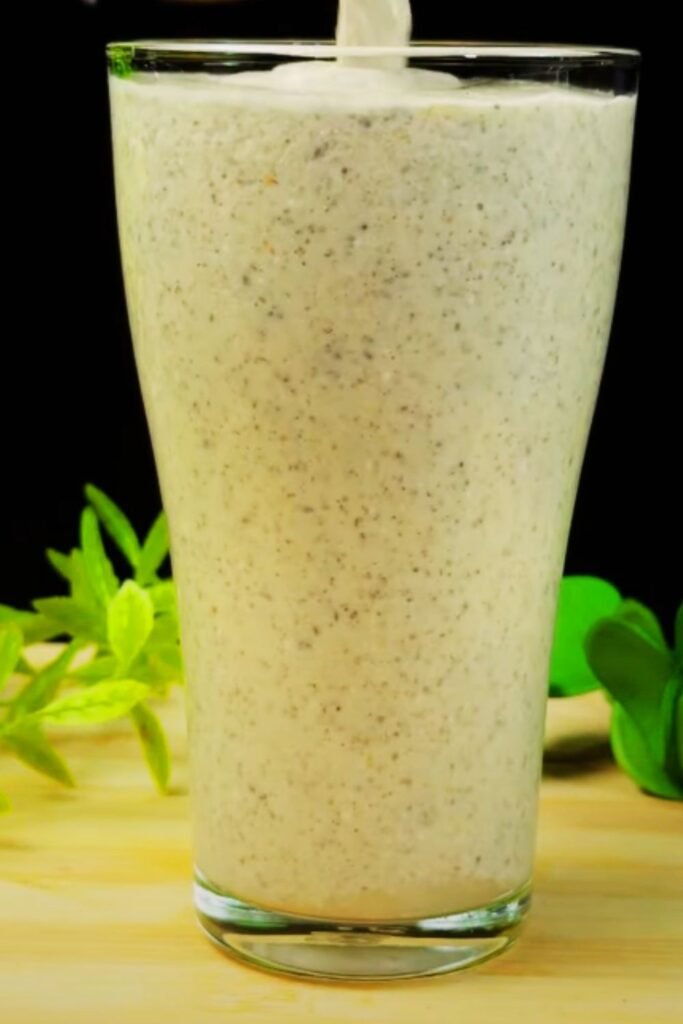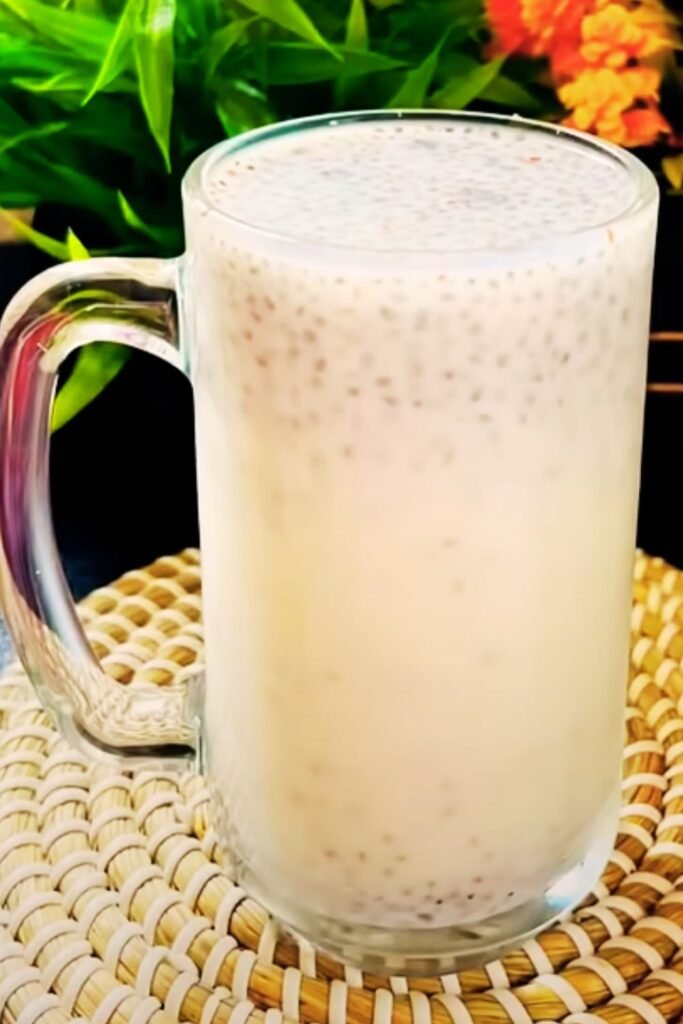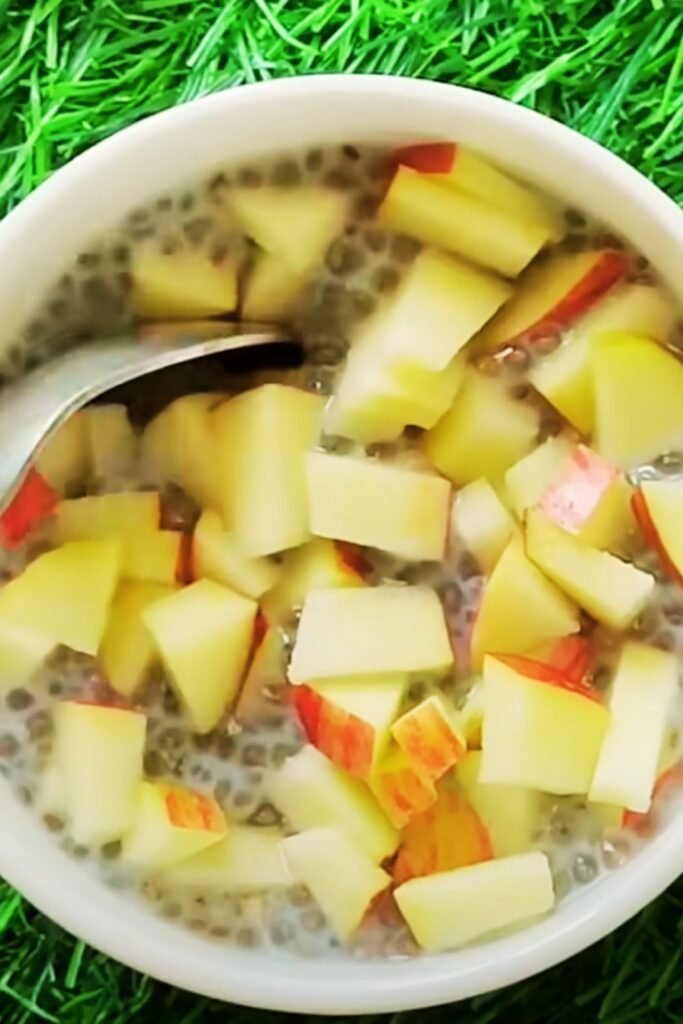When I first discovered chia seeds, I was amazed by their incredible nutritional profile. These tiny powerhouses are packed with omega-3 fatty acids, fiber, protein, antioxidants, and essential minerals. But what really changed my perspective was when I started grinding them instead of eating them whole.
Grinding chia seeds can significantly increase their nutritional bioavailability and make them easier to digest. The process breaks down the hard outer shell of the seeds, allowing your body to access more of their nutrients. In this comprehensive guide, I’ll show you exactly how to grind chia seeds properly, explore the benefits of ground versus whole seeds, and share creative ways to incorporate them into your daily diet.
Why Grind Chia Seeds?
Before diving into the grinding methods, let’s understand why grinding these tiny seeds matters in the first place.
Chia seeds contain an impressive nutritional profile, but their hard outer shell can pass through your digestive system without being fully broken down. When this happens, you miss out on some of the nutrients locked inside. Grinding chia seeds before consumption helps solve this problem by:
- Breaking down the seed’s hard outer shell
- Increasing the bioavailability of omega-3 fatty acids
- Enhancing the absorption of antioxidants and minerals
- Making the seeds easier to digest
- Creating a more versatile ingredient for recipes
I noticed a significant difference in how I felt after switching to ground chia seeds. They seemed to provide more sustained energy and didn’t cause the mild bloating I occasionally experienced with whole seeds.
Nutritional Comparison: Whole vs. Ground Chia Seeds
While the nutritional content remains the same whether chia seeds are whole or ground, the bioavailability (how much your body can actually absorb and use) differs significantly.
| Nutrient | Whole Chia Seeds | Ground Chia Seeds |
|---|---|---|
| Omega-3 Fatty Acids | Present but partially accessible | Highly bioavailable |
| Fiber | 10g per ounce | 10g per ounce (more effective) |
| Protein | 4.7g per ounce | 4.7g per ounce (better absorbed) |
| Calcium | 177mg per ounce | 177mg per ounce (better absorbed) |
| Iron | 2.2mg per ounce | 2.2mg per ounce (better absorbed) |
| Digestibility | Moderate | High |
| Gelation time | 10-15 minutes | 2-5 minutes |
As you can see, while the nutritional content is identical, grinding chia seeds makes these nutrients much more accessible to your body. Additionally, ground chia seeds gel much faster, making them more convenient for quick recipes.
Essential Tools for Grinding Chia Seeds
Before we get into the specific methods, let’s look at the tools you’ll need. I’ve tried all of these options and will share my experience with each one:

Common Tools for Grinding Chia Seeds
Coffee Grinder : My personal favorite for grinding chia seeds. Electric coffee grinders create a fine, consistent powder in seconds. I recommend a dedicated grinder for seeds to avoid coffee flavor contamination.
Blender : High-speed blenders work well for larger batches. Vitamix and similar powerful blenders create a fine powder, though you may need to pulse and shake occasionally for even grinding.
Food Processor : Works for larger quantities but may not produce as fine a powder as coffee grinders. Most effective when grinding larger batches of seeds.
Mortar and Pestle : A traditional method that gives you complete control over the grinding process. It requires more effort but produces excellent results for small quantities.
Spice Grinder : Similar to coffee grinders but designed specifically for spices. They work exceptionally well for chia seeds and other small seeds.
Manual Seed Mill : Specialized tools designed specifically for grinding seeds. These are excellent investments if you frequently grind seeds.
I personally rotate between using a dedicated coffee grinder for small batches and my high-speed blender when I’m preparing a larger quantity for meal prep.
How to Grind Chia Seeds: Step-by-Step Methods
Now let’s dive into the specific methods for grinding chia seeds. I’ll start with what I consider the most effective approach and move through various options.
Method 1: Using a Coffee Grinder (My Preferred Method)
- Measure the desired amount of chia seeds (start with 1-2 tablespoons for testing)
- Ensure your grinder is clean and completely dry
- Pour the seeds into the grinder chamber
- Secure the lid tightly
- Grind in short pulses of 5-10 seconds
- Check the consistency
- Continue pulsing until you achieve the desired powder consistency
- Transfer the ground seeds to an airtight container
Pro Tip: I find that pulsing rather than continuous grinding prevents the seeds from heating up and preserves more nutrients.
Method 2: Using a High-Speed Blender
- Measure at least 1/4 cup of chia seeds (blenders work better with larger quantities)
- Pour the seeds into the blender jar
- Secure the lid firmly
- Start on a low setting and gradually increase to medium-high
- Blend in pulses of 10-15 seconds
- Stop and shake the blender occasionally to redistribute the seeds
- Continue until you achieve the desired consistency
- Transfer to an airtight container
Pro Tip: If your blender has a small jar or personal cup attachment, use that for grinding small quantities of seeds.
Method 3: Using a Food Processor
- Measure at least 1/2 cup of chia seeds
- Pour them into the food processor bowl
- Secure the lid properly
- Process on high in 15-second intervals
- Stop and scrape down the sides as needed
- Continue processing until you achieve the desired consistency
- Transfer to an airtight container
Pro Tip: Food processors work best with larger quantities, so consider grinding in bulk if using this method.
Method 4: Using a Mortar and Pestle
- Measure 1-2 tablespoons of chia seeds
- Place them in the mortar
- Hold the mortar steady with one hand
- Use the pestle to crush the seeds using a circular grinding motion
- Apply firm downward pressure while rotating
- Continue until you achieve a fine powder
- Transfer to an airtight container
Pro Tip: This method requires more effort but gives you complete control over the grinding process and produces an exceptionally fine powder.

Storage Guidelines for Ground Chia Seeds
Proper storage is crucial for maintaining the freshness and nutritional value of ground chia seeds. Since grinding exposes more surface area to air, ground seeds can oxidize more quickly than whole ones.
Storage Container Options:
Glass Jar with Tight-Fitting Lid : My preferred method. Glass doesn’t interact with the oils in chia seeds and keeps them fresh longer.
Airtight Plastic Container : A good alternative if you don’t have glass containers available.
Vacuum-Sealed Bag : Ideal for long-term storage as it removes oxygen that can cause rancidity.
Storage Locations and Durations:
| Storage Location | Whole Chia Seeds | Ground Chia Seeds |
|---|---|---|
| Pantry | Up to 2 years | 1-2 months |
| Refrigerator | 2+ years | 2-4 months |
| Freezer | 4+ years | Up to 1 year |
I recommend grinding smaller batches more frequently rather than large amounts at once. I typically grind enough for 1-2 weeks and store them in the refrigerator in a small glass jar.
Signs Your Ground Chia Seeds Have Gone Bad
Always check your ground chia seeds before using them. Here’s what to look for:
- Rancid or “off” smell (similar to old paint or crayons)
- Bitter taste (fresh chia seeds have a mild, nutty flavor)
- Clumping or unusual moisture
- Visible mold
- Significant color change (darkening)
If you notice any of these signs, discard the seeds immediately. Trust your senses—if something seems off, it’s better to be safe.
Creative Ways to Use Ground Chia Seeds
Once you’ve mastered grinding chia seeds, here are some delicious and nutritious ways to incorporate them into your daily diet:
Breakfast Ideas:
- Stir into overnight oats or hot oatmeal
- Blend into smoothies for added nutrition and thickness
- Mix into yogurt with fresh fruit
- Add to pancake or waffle batter
- Sprinkle over avocado toast
Baking Applications:
- Use as an egg substitute (1 tablespoon ground chia seeds + 3 tablespoons water = 1 egg)
- Add to muffin, bread, or cookie recipes
- Mix into homemade granola bars
- Use in crackers or homemade bread
- Incorporate into energy balls or protein bars
Meals and Sides:
- Thicken soups and stews
- Add to homemade salad dressings
- Mix into veggie burgers or meatballs
- Sprinkle over roasted vegetables
- Stir into rice or quinoa dishes

Chia Seed Gel: A Versatile Kitchen Staple
Ground chia seeds make an excellent gel that can be used in numerous recipes. The basic ratio is:
- 1 tablespoon ground chia seeds
- 3 tablespoons water
Steps:
- Mix the ground chia seeds with water
- Stir immediately to prevent clumping
- Let sit for 5-10 minutes, stirring occasionally
- Use as desired or refrigerate in an airtight container for up to 5 days
This gel can be used as:
- An egg substitute in baking
- A thickener for soups and sauces
- A base for puddings
- A binder in veggie burgers
- A hydrating addition to smoothies
Comparing Different Grinding Methods
To help you choose the best method for your needs, I’ve tested and compared the most common grinding approaches:
| Method | Time Required | Consistency | Quantity Suitability | Noise Level | Ease of Cleaning | Overall Rating |
|---|---|---|---|---|---|---|
| Coffee Grinder | 10-15 seconds | Very Fine | Small to Medium | Moderate | Moderate | ★★★★★ |
| High-Speed Blender | 30-60 seconds | Fine to Very Fine | Medium to Large | High | Easy | ★★★★☆ |
| Food Processor | 1-2 minutes | Medium to Fine | Large | High | Moderate | ★★★☆☆ |
| Mortar and Pestle | 3-5 minutes | Fine (variable) | Very Small | Silent | Easy | ★★★☆☆ |
| Spice Grinder | 10-15 seconds | Very Fine | Small | Moderate | Moderate | ★★★★★ |
Based on my extensive testing, the coffee/spice grinder offers the best balance of efficiency, consistency, and convenience for most home users.
Common Challenges and Solutions
Even with the right tools, you might encounter some challenges when grinding chia seeds. Here are solutions to common issues:
Challenge: Seeds Sticking to Grinder Walls
Solution: Add a small amount of rice or rolled oats to absorb oil and prevent sticking. Alternatively, pulse rather than continuously grind.
Challenge: Inconsistent Texture
Solution: Shake or tap your grinder/blender during the grinding process to redistribute the seeds. For food processors, stop and scrape down the sides regularly.
Challenge: Seeds Heating Up During Grinding
Solution: Grind in short pulses and allow the grinder to cool between pulses. Overheating can damage the delicate omega-3 fatty acids.
Challenge: Difficulty Cleaning Equipment
Solution: Grind a small amount of rice after chia seeds to absorb oil residue. For blenders, blend warm water with a drop of dish soap, then rinse thoroughly.
Challenge: Seeds Not Grinding Finely Enough
Solution: Reduce the quantity being ground at once. Smaller batches typically result in finer grinding.
Health Benefits of Ground Chia Seeds
Understanding the health benefits can help motivate you to incorporate ground chia seeds into your diet:
- Enhanced Omega-3 Absorption: Ground seeds allow better absorption of alpha-linolenic acid (ALA), a plant-based omega-3 that supports heart and brain health.
- Improved Digestibility: The grinding process breaks down fiber structures, making them gentler on the digestive system.
- Better Blood Sugar Management: Ground chia can help prevent blood sugar spikes due to its higher bioavailable fiber content.
- Increased Mineral Availability: Minerals like calcium, phosphorus, and zinc become more bioavailable when the seeds are ground.
- More Effective Hydration: Ground chia absorbs water more efficiently, potentially aiding in maintaining hydration during exercise.
I’ve personally noticed improved digestion and more stable energy levels since incorporating ground chia seeds into my daily routine.
Comparing Chia Seeds to Other Superfoods
To put chia seeds in context, here’s how they compare to other popular superfoods:
| Nutrient per oz (28g) | Ground Chia Seeds | Flaxseeds | Hemp Seeds | Pumpkin Seeds |
|---|---|---|---|---|
| Calories | 138 | 151 | 165 | 151 |
| Protein | 4.7g | 5.2g | 9.2g | 7.1g |
| Total Fat | 8.7g | 11.8g | 14.6g | 13g |
| Omega-3 Fatty Acids | 4.9g | 6.5g | 3.0g | 0.1g |
| Fiber | 10.6g | 7.8g | 0.9g | 1.7g |
| Calcium | 177mg | 71mg | 21mg | 12mg |
| Iron | 2.2mg | 1.6mg | 2.3mg | 3.3mg |
| Grinding Necessary? | Benefits from grinding | Yes | No | No |
As you can see, each seed has its strengths, but chia seeds offer an excellent balance of nutrients, especially when ground to enhance bioavailability.
Frequently Asked Questions
Here are answers to the most common questions I receive about grinding chia seeds:
Q: Is it better to grind chia seeds or eat them whole?
For maximum nutritional benefit, grinding is better. While whole chia seeds still provide fiber and some nutrients, grinding them significantly increases your body’s ability to access their omega-3 fatty acids, antioxidants, and minerals. If you’re consuming chia primarily for their omega-3 content, grinding is strongly recommended.
Q: How fine should I grind chia seeds?
Aim for a consistency similar to fine breadcrumbs or flour. The finer the grind, the better your body can absorb the nutrients. However, even a coarse grind is better than leaving them whole.
Q: Can I grind chia seeds in advance?
Yes, but for optimal freshness, I recommend grinding only what you’ll use within 1-2 weeks and storing them in an airtight container in the refrigerator. For longer storage, keep them in the freezer to prevent the oils from going rancid.
Q: Do ground chia seeds taste different from whole ones?
Ground chia seeds have a slightly nuttier flavor that some people find more pleasant than whole seeds. They also don’t have the distinctive crunchy texture of whole seeds, which some people prefer.
Q: Can I mix ground chia seeds with other ground seeds?
Absolutely! Creating seed blends with ground flax, hemp, pumpkin, or sunflower seeds can provide a broader nutrient profile. I often make a “super seed mix” with equal parts ground chia, flax, and hemp seeds for adding to smoothies and oatmeal.
Q: How much ground chia seed should I consume daily?
Start with 1-2 tablespoons daily and gradually increase if desired. Remember that chia seeds are high in fiber, so introducing them too quickly can cause digestive discomfort. Always drink plenty of water when consuming chia seeds, as they absorb liquid and can cause dehydration if not properly hydrated.
Q: Can ground chia seeds be used as a thickening agent?
Yes! Ground chia seeds work excellently as thickeners for soups, sauces, and puddings. They gel faster than whole seeds, making them more efficient for this purpose.
Conclusion
Grinding chia seeds is a simple process that significantly enhances their nutritional benefits and versatility in recipes. Whether you use a coffee grinder, blender, or traditional mortar and pestle, the extra step is well worth the effort for improved digestion and nutrient absorption.
Remember to store your ground seeds properly, use them within a reasonable timeframe, and experiment with different recipe applications to find your favorites. By incorporating ground chia seeds into your daily routine, you’re giving your body access to an incredibly nutrient-dense food in its most bioavailable form.
I hope this guide has inspired you to take the simple extra step of grinding your chia seeds. Your body will thank you for it!